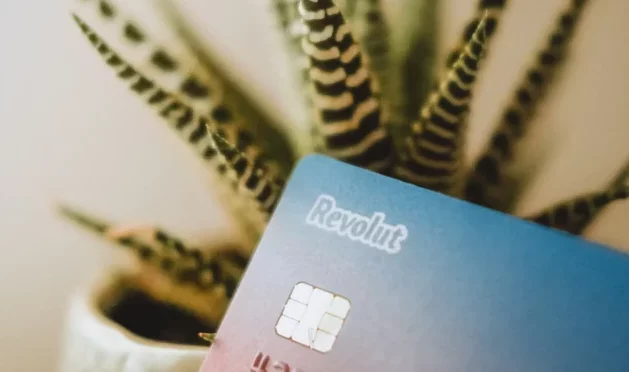FinTech is a place where innovation meets regulation, and the acronyms KYC and KYB hold the key to secure and compliant operations. Know Your Customer (KYC) and Know Your Business (KYB) are more than just compliance buzzwords; they are foundational pillars that ensure trust, transparency, and security in financial transactions.
KYC (Know Your Customer) involves verifying the identity of individual customers, assessing their risk, and ensuring they are not involved in illegal activities. This process helps fintech companies maintain the integrity of their services while protecting against fraud and money laundering. KYB (Know Your Business), on the other hand, focuses on businesses, requiring thorough checks on ownership structures, business practices, and legitimacy to prevent corporate fraud and ensure regulatory compliance.
Ready to dive deeper into the world of KYC and KYB? Let’s explore how these processes work, who needs them, and some real-world case studies that highlight their impact.
What is KYC (Know Your Customer)?
Know Your Customer (KYC) is a process used by financial institutions and other businesses to verify the identity of their clients. The main purpose of KYC is to prevent financial crimes such as money laundering, fraud, and terrorist financing by ensuring that businesses know who their customers are and the nature of their financial activities.
Key Components of KYC:
- Identity Verification:
- Customer Identification Program (CIP): Requires customers to provide valid identification documents, such as a passport, driver’s license, or national ID card.
- Document Verification: Checking the authenticity of the provided identification documents to confirm the customer’s identity.
- Biometric Verification: Using biometric data like fingerprints or facial recognition for additional identity confirmation.
- Risk Assessment:
- Customer Risk Profiling: Assessing the risk level of customers based on factors such as their occupation, source of funds, and transaction patterns.
- Enhanced Due Diligence (EDD): Implementing additional checks for high-risk customers to ensure they are not involved in illegal activities.
- Ongoing Monitoring:
- Transaction Monitoring: Continuously monitoring customer transactions to detect and report any suspicious activities.
- Periodic Reviews: Regularly updating customer information and reassessing risk profiles to ensure ongoing compliance.
- Record Keeping:
- Maintaining detailed records of all KYC processes, including customer identification documents, risk assessments, and transaction histories.
Regulatory Requirements:
- Bank Secrecy Act (BSA): A U.S. law requires financial institutions to assist government agencies in detecting and preventing money laundering. It mandates implementing KYC procedures to verify customer identities and monitor transactions.
- USA PATRIOT Act: Enacted after the 9/11 attacks, this act strengthened anti-money laundering regulations and expanded KYC requirements to include enhanced customer due diligence and transaction monitoring.
- Financial Action Task Force (FATF): An international body that sets global standards for combating money laundering and terrorist financing. It provides guidelines for KYC processes and recommends best practices for financial institutions.
- European Union Anti-Money Laundering Directives (AMLD): These directives establish regulations for preventing money laundering and terrorist financing within the EU. They include specific KYC requirements for financial institutions.
What is KYB (Know Your Business)?
Know Your Business (KYB) is a due diligence process used by financial institutions and other companies to verify the identity and legitimacy of businesses they engage with. The primary purpose of KYB is to prevent fraud, money laundering, and other illegal activities by ensuring that businesses are who they claim to be and operate within legal boundaries.
Key Components of KYB:
- Business Verification:
- Business Registration Documents: Collecting and verifying official documents such as articles of incorporation, business licenses, and registration certificates to confirm the business’s legal existence.
- Proof of Address: Verifying the business’s physical address through utility bills, lease agreements, or other official documents.
- Ownership Structure:
- Beneficial Ownership Information: Identifying and verifying the ultimate beneficial owners (UBOs) of the business, who directly or indirectly own or control the entity.
- Organizational Chart: Reviewing the business’s organizational structure to understand the hierarchy and key decision-makers.
- Financial Information:
- Bank Statements: Analyzing the business’s financial health by reviewing bank statements, financial records, and credit reports.
- Tax Documents: Collecting and verifying tax identification numbers and recent tax filings.
- AML and Sanctions Checks:
- Sanctions Lists: Screening the business and its owners against global sanctions lists, such as those maintained by the Office of Foreign Assets Control (OFAC) and the United Nations.
- Politically Exposed Persons (PEPs): Identifying whether any of the business’s owners or key executives are politically exposed persons, which may require enhanced due diligence.
- Ongoing Monitoring:
- Continuous Monitoring: Implementing systems to regularly monitor the business’s activities, transactions, and changes in ownership or structure to detect any suspicious behavior or compliance issues.
Regulatory Requirements:
- Corporate Transparency Act (CTA): A U.S. law that requires certain businesses to report their beneficial ownership information to the Financial Crimes Enforcement Network (FinCEN). The aim is to increase transparency and prevent illicit activities like money laundering and terrorism financing.
- Sixth Anti-Money Laundering Directive (6AMLD): An EU regulation that strengthens the existing anti-money laundering framework by expanding the list of predicate offenses, introducing stricter penalties, and enhancing cooperation among member states. It includes specific KYB requirements for identifying and verifying business entities and their beneficial owners.
- Fourth Anti-Money Laundering Directive (4AMLD): Another EU directive that sets out detailed KYB requirements, including the need to collect and verify beneficial ownership information, conduct ongoing monitoring, and report suspicious activities.
Does my company need KYC or KYB? KYB vs. KYC Explained
Know Your Customer (KYC)
- Focus: Individual customers.
- Purpose: Verify the identity of individuals to prevent fraud, money laundering, and other illegal activities.
- Components: Identity verification, risk assessment, ongoing monitoring.
- Example: A bank confirming the identity of a person opening a new account.
Know Your Business (KYB)
- Focus: Business entities.
- Purpose: Verify the legitimacy of businesses to prevent corporate fraud and money laundering, and ensure compliance with regulations.
- Components: Business verification, ownership structure analysis, financial checks, ongoing monitoring.
- Example: A payment processor verifying the legitimacy of a business using its services.
How Can a Company Determine Which They Need?
- Type of Customers:
- Individual Customers: If your business primarily deals with individual clients (e.g., retail banking, personal loans), KYC is essential.
- Business Clients: If your business serves other businesses (e.g., B2B services, corporate banking), KYB is necessary.
- Regulatory Requirements:
- Check industry-specific regulations to determine if KYC, KYB, or both are required for compliance.
- Risk Profile:
- Assess the risk associated with your customer base. High-risk industries may require more stringent KYC/KYB processes.
- Business Model:
- Understand your business model and the nature of your transactions. For example, fintech companies handling both individual and business accounts need to implement both KYC and KYB.
By evaluating these factors, a company can determine whether they need KYC, KYB, or both to effectively manage compliance and reduce risks.
Who Needs KYC and KYB?
KYC and KYB processes are essential for a wide range of industries to ensure compliance, mitigate risks, and maintain the integrity of financial transactions. Here are some examples of who needs KYC and KYB and why:
Financial Institutions Examples
Banks:
- Banks are required to implement KYC procedures to verify the identity of their customers, prevent money laundering, and ensure compliance with regulations.
- Example: HSBC employs extensive KYC checks to validate the identity of account holders and monitor transactions for suspicious activities.
Credit Unions:
- Similar to banks, credit unions must adhere to KYC regulations to safeguard against financial crimes and ensure the legitimacy of their members.
- Example: Navy Federal Credit Union uses KYC processes to verify the identity of its members and provide secure banking services.
Fintech Companies Examples
Crypto Exchanges:
- Crypto exchanges must follow KYC and KYB guidelines to prevent illegal activities such as money laundering and terrorist financing.
- Example: Binance requires users to complete KYC verification before they can trade on the platform, ensuring compliance with global regulations.
Payment Processors:
- Payment processors need KYB to verify the businesses they serve, ensuring they are legitimate and compliant with financial regulations.
- Example: Stripe implements KYB checks to verify businesses using its payment platform, reducing the risk of fraud and enhancing security.
Non-Financial Businesses Examples
E-commerce:
- E-commerce platforms use KYC to verify the identity of sellers and buyers, protecting against fraud and ensuring secure transactions.
- Example: Amazon employs KYC processes to verify third-party sellers, ensuring a trustworthy marketplace for consumers.
Real Estate:
- Real estate agencies implement KYB to verify the legitimacy of businesses and KYC to validate the identity of individual buyers and sellers.
- Example: A real estate firm conducts KYC checks on clients before facilitating property transactions, ensuring compliance with anti-money laundering regulations.
KYC & KYB Case Studies
| Company | Challenge | Risks | Solution | KYC/KYB Benefits |
|---|---|---|---|---|
| Financial House [Source] | Financial House encountered difficulties with its intricate compliance process, which encompassed corporate onboarding and continuous risk monitoring across multiple jurisdictions. | Higher operational costs, increased risk of regulatory non-compliance and associated fines, and greater exposure to fraud and financial crimes due to inadequate verification processes. | By adopting a KYB solution, Financial House automated KYB checks, streamlined the entire compliance process, and developed a centralized repository for customer documentation. | Efficiency: The automation led to significant time and cost savings. Accuracy: Improved the precision of risk assessments. Compliance: Ensured adherence to regulatory requirements, reducing the risk of non-compliance. |
| PayPal [Source] | PayPal needed to ensure secure transactions and comply with global regulations while maintaining a seamless user experience. | Higher risk of fraudulent transactions, potential fines, and legal issues due to non-compliance, as well as erosion of user trust and potential customer loss because of security concerns. | PayPal implemented a comprehensive KYC process that included verifying customer identities using a combination of document verification, biometric data, and risk assessments. | Fraud Prevention: Enhanced ability to detect and prevent fraudulent activities. Compliance: Ensured adherence to international anti-money laundering regulations. User Trust: Built trust with users by providing a secure platform for transactions. |
| Luminor Bank [Source] | During the pandemic, Luminor Bank needed to switch to remote onboarding processes for their business clients. | Manual processes cause onboarding delays, increase the risk of identity fraud due to insecure verification methods, and result in potential regulatory breaches with associated penalties. | They partnered with Ondato to implement a modern KYB solution that allowed for secure and efficient remote onboarding. The process included identity verification through video calls and automated checks against registries. | Efficiency: Enabled fast and accurate remote onboarding. Security: Ensured secure identity verification. Compliance: Maintained regulatory compliance during remote operations. |
| ShopBack [Source] | ShopBack, a leading cashback platform, needed a scalable compliance solution to handle its growing customer base. | Manual processes struggle to handle a growing customer base efficiently, increase vulnerability to fraudulent activities, and lead to longer onboarding times, resulting in poor customer experience. | By implementing a KYB solution, they were able to automate the verification of business entities, reducing manual effort. | Scalability: Allowed for growth without compromising compliance. Efficiency: Reduced manual verification efforts. Customer Experience: Improved overall customer experience by speeding up onboarding. |
| Coinbase [Source] | As a leading cryptocurrency exchange, Coinbase needed to comply with strict regulatory requirements and protect its platform from illegal activities. | Loss of market credibility and customer trust, risk of significant fines and potential shutdown by regulatory authorities, and increased vulnerability to money laundering and other financial crimes. | Coinbase implemented a robust KYC process that included detailed customer identity verification, continuous monitoring of transactions, and advanced risk assessment tools. | Regulatory Compliance: Met regulatory requirements in multiple jurisdictions. Security: Enhanced platform security by identifying and mitigating suspicious activities. Market Credibility: Strengthened its reputation as a reliable and compliant exchange. |
| GC Partners [Source] | GC Partners, a private equity firm, required a robust KYB process to ensure compliance with regulatory requirements. | Higher risk of regulatory breaches and fines, time-consuming and error-prone manual processes, and inadequate risk monitoring leading to potential financial and reputational damage. | By integrating a KYB solution, they streamlined their due diligence process, improved risk monitoring, and enhanced overall compliance practices. | Compliance: Ensured adherence to regulatory requirements. Efficiency: Streamlined due diligence processes. Risk Management: Improved risk monitoring and management. |
| BitPay [Source] | BitPay, a cryptocurrency payment platform, needed to enhance their client lifecycle management. | Higher likelihood of fraudulent activities, increased risk of non-compliance with regulations, and complicated client lifecycle management processes. | They implemented a KYC solution to automate the verification of business entities. | Fraud Prevention: Reduced the risk of fraud. Compliance: Ensured regulatory compliance. Efficiency: Enhanced client lifecycle management. |
Understanding AML in Fintech
Anti-Money Laundering (AML) includes laws and rules aimed at stopping criminals from hiding illegally gained money as legal income. Financial institutions and fintech companies must follow AML guidelines to find, stop, and report suspicious activities connected to money laundering and terrorist financing.
KYC and KYB are integral components of AML efforts. Here’s how they relate:
- Customer Due Diligence (CDD): Both KYC and KYB are part of the CDD process, which involves verifying the identity of customers (individuals for KYC and businesses for KYB) and assessing the risks associated with them.
- Preventing Financial Crimes: The primary goal of AML is to prevent money laundering and other financial crimes. KYC and KYB help achieve this by ensuring that financial transactions are legitimate and that customers are not involved in illegal activities.
- Regulatory Compliance: Financial institutions and other regulated entities are required to implement KYC and KYB processes to comply with AML regulations. This includes verifying customer identities, monitoring transactions, and reporting suspicious activities.
- Risk Management: By conducting KYC and KYB checks, organizations can identify high-risk customers and take appropriate measures to mitigate potential risks.
In summary, KYC and KYB are essential tools in the broader framework of AML, helping to ensure the integrity of financial systems and prevent financial crimes.
Key Components of AML:
Risk-Based Approach
Implementing risk assessments to identify and mitigate potential money laundering risks.
Customer Due Diligence (CDD)
Verifying the identity of customers (KYC) and checking the nature of their activities to ensure they are not engaged in illegal activities.
Ongoing Monitoring
Continuously monitoring transactions and activities to detect unusual or suspicious behavior.
Reporting Obligations
Filing Suspicious Activity Reports (SARs) with relevant authorities when suspicious transactions are detected.
Internal Controls and Training
Establishing robust internal controls and regularly training employees on AML regulations and procedures.
Case Studies in AML Implementation:

PayPal
PayPal uses sophisticated machine learning algorithms to monitor and analyze transactions in real-time, identifying and flagging suspicious activities for further investigation.

Revolut
Revolut employs an AML compliance team and advanced technology to detect and prevent money laundering. They also perform regular audits and update their AML policies to stay compliant with evolving regulations.

HSBC
HSBC faced a $1.9 billion fine for AML compliance failures, which led to significant improvements in their AML policies, including stricter due diligence processes and enhanced transaction monitoring systems.
By integrating AML with KYC and KYB processes, fintech companies can create a robust compliance framework that safeguards against financial crimes and enhances overall security.
HUSPI has experience with implementing custom AML systems for banks and financial corporations. Contact us to learn more about our AML solutions expertise.
10 Common Challenges of Implementing KYC and KYB Procedures
While KYC and KYB procedures are vital for security, scalability, trustworthiness, and many other values one would look for in a financial company, it is important to understand what might be the challenges on the path to being fully compliant.
Here are 10 common challenges:
10 Solutions for Implementing KYC and KYB Procedures
Here are 10 solutions to the abovementioned challenges along with examples of its implementation. It’s important to understand that the goal of all these “hoops” is not just to make the life of FinTech companies harder, but actually simplify it in the long run. I mean, fewer manual checks is always better, isn’t it?
Conclusion
By knowing exactly who their customers and business partners are, companies can prevent fraud, money laundering, and other illegal activities. This not only protects the businesses but also builds trust with their customers.
Adopting strong KYC and KYB practices isn’t just about following the rules—it’s about creating a secure environment where everyone can feel confident in their transactions. So, whether you’re a small business or a big financial institution, making these practices a part of your daily operations is a smart move.
By doing so, you’ll not only stay on the right side of the law but also gain a competitive edge by showing that you take security and compliance seriously. Let’s embrace these processes and help make the financial world a safer place for all!
Wondering about time-to-value?
Request a no-obligation discovery call and receive a preliminary estimate tailored to your KPIs.


